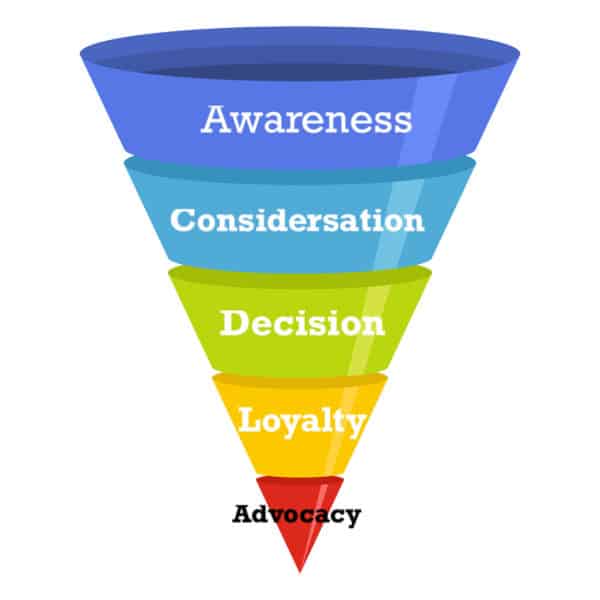One of the most common causes for confusion in B2B marketing, when trying to convert leads into sales, is figuring out how TOTF, MOTF and BOTF marketing content should differ within the inbound marketing scheme of things.
So to get that out of the way, let me explain very quickly what the difference is.
TOTF – Meaning top of the funnel. This is the awareness stage, when your prospects are starting to define what their problem is, and it’s your chance to help them to do that.
MOTF – Meaning middle of the funnel. This is the consideration stage, when your prospects have a good idea of what their problem is and are looking into the different solutions available. At this stage, some of your prospects will fall off because they want to fix their problems without investing any money. But this isn’t a complete loss as they may have found some valuable information on your website and could have shared your content.
BOTF – Meaning bottom of the funnel. This is where your prospects have already benefited somewhat from the content you have provided and are looking to make a decision on which vendor or supplier they want to go with to completely solve their problem.


So now that we know that, let’s get to the problem at hand.
Do you have good BOTF content?
Many of our clients have what they consider BOTF gated content, but when asked if leads converting with this content can be contacted directly by their sales team, they often feel that the leads need to be nurtured further. If this is indeed how you feel about your BOTF content, then you more than likely are working with MOTF content.
Prospects converting on BOTF gated content are hot leads. They are ready to talk about making a decision. That’s why a Contact Us form on a services page is considered BOTF content.
Obviously, you shouldn’t rely solely on the contact us form. It’s very passive and BOFU content can definitely be more proactive. There are different kinds of gated content can be used for BOTF conversions:
- Checklists
- Automated assessments
- Top tips
- Guides
- Contact Us form
But what makes good BOTF content for your business and how do you create it?
How to generate great BoFu content in 4 easy steps.
#1 Find out what do your sales team think is a warm lead.
You are doing this because….
The problem here lies in realising that there is no one size fits all. BOTF content depends on a few factors, and the first starts with your sales team.
You need to ask them what kind of leads they can work with and what do they define as a good lead (within reason). Once you’ve figured that out, you can start working on what kind of content can nurture and indicate a warm lead.
What do you use for a quick win when on-boarding a new client?
This question can be a bit tricky as it works mostly for businesses providing more complex services. If you’re providing a one-time product, then a form allowing a prospect to request a specific quote is as close to on-boarding as you are going to get.
If you are a service, there will be a few processes that take place at the start of a business relationship that you will need to go through. This usually consists of various assessments to find out where your new client is at so you can properly understand how you can service them.
Try and simplify and automate these processes so they can be used as gated content. Not only will it clarify to your prospect how much they need you, but it will also give your sales team a conversation started and help you to skip a few steps when they convert to being a client.
What are the different problems you can solve?
Your business is likely to solve more than one problem. You may have two or three major problems that you solve and within each of them, lies several smaller problems. List all your problems down and pull out the ones that can be solved easily with a simple PDF, checklist or automated questionnaire.
What are your client’s most common pain points?
This may cross over with the different problems you solve, but as yourself and your team this question anyway and you might find different answers. Pain points may not have an easy solution like problems do.

For example, as an inbound marketing consultancy, a problem we solve is ‘I do not have enough leads’ to which there are a multitude of miniature solutions that can be put into a PDF.
A pain point in this field would be ‘My business lacks the marketing team to execute on an inbound marketing strategy’ this cannot be solved with a PDF but solutions for this pain point can be proposed and exemplified as BOTF content.
Which of your blogs has the most views and engagement?
A great way to gauge what a popular pain point is for your prospects is to look at which of your blogs has the most views. What is it about? What do the comments say? Can you create a downloadable that solves the problem or pain point referenced in your blog?
What do your prospects do or say when you know they are most likely to convert? Ie what do you consider to be buying questions?








